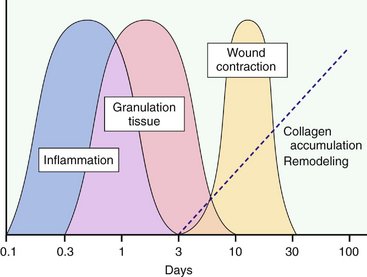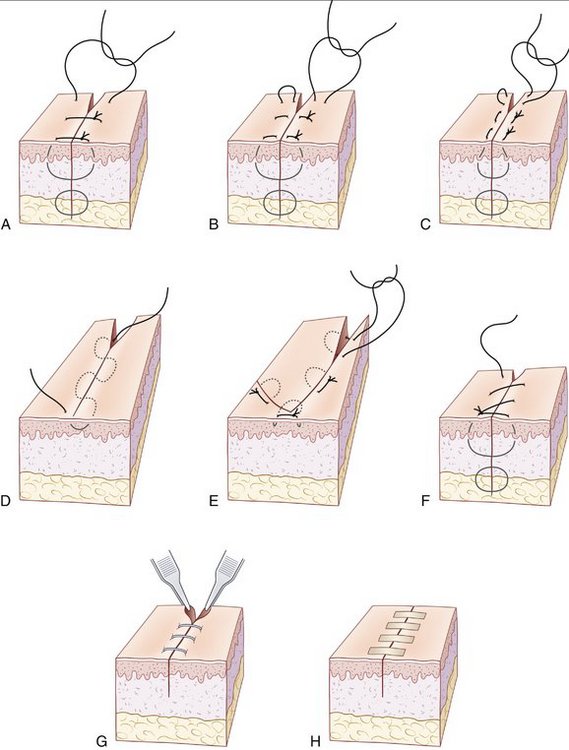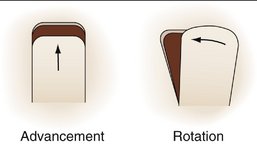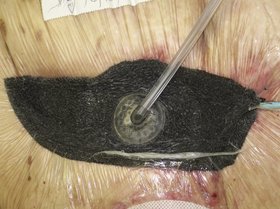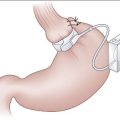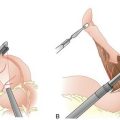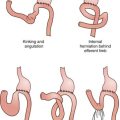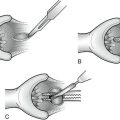CHAPTER 2 Principles of Wound Closure
BACKGROUND
Normal wound healing progresses through three distinct but overlapping phases. The inflammatory phase of wound healing begins first and lasts between 3 and 7 days in the normal wound environment; the presence of significant devitalized tissue (e.g., in traumatic wounds) can prolong this phase. The inflammatory phase is characterized by the influx of neutrophils and macrophages. The proliferative phase of wound healing typically begins after 24 hours and may last for up to 3 weeks. The hallmark of the proliferative phase is the formation of granulation tissue, a dense network of fibroblasts, extracellular matrix, and newly formed blood vessels. The principal cell types involved in the proliferative phase are the keratinocyte and the fibroblast. The remodeling phase of wound healing begins after 2 weeks and may last as long as 1 year. In the remodeling phase, the wound begins to contract and the collagen present in the wound is reorganized. The principal cell type involved in wound contracture is the myofibroblast, whereas fibroblasts are responsible for depositing and reorganizing collagen (Fig. 2-1).
WOUND CLOSURE
Suture Materials
Suturing Techniques
Alternative Closure Techniques
POSTOPERATIVE CONSIDERATIONS: SURGICAL DRESSINGS
A variety of dressing types may be used in the management of surgical wounds.
Jones KR, Fennie K, Lenihan A. Evidence-based management of chronic wounds. Adv Skin Wound Care. 2007;20:591-600.
Lee CK, Hansen SL. Management of acute wounds. Clin Plast Surg. 2007;34:685-696.
Thorne CH, Beasley RW, Aston SJ, et al. Grabb and Smith’s Plastic Surgery, 6th ed. Philadelphia: Lippincott Williams & Wilkins; 2007.

